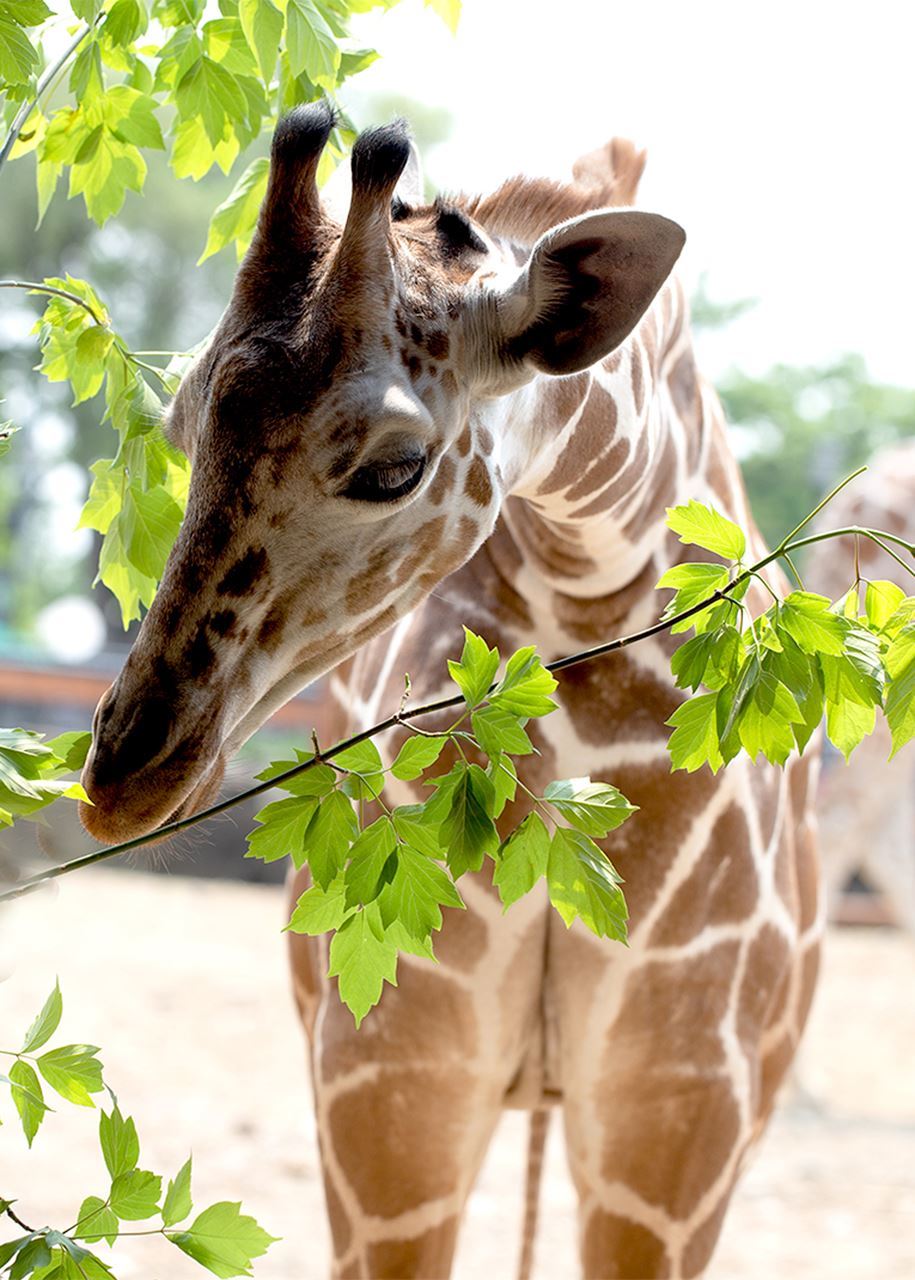After 20 years’ experience in public gardens, my love of plants continues to astound me. There’s always something new and unexpected to learn about the ways that plants, animals, and people are connected. That’s especially true in the world of zooticulture—the art of horticulture in a zoo—a discipline that’s become my latest passion after beginning a new position at Como Park Zoo and Conservatory in St. Paul, Minnesota. I have that wonderful, familiar feeling of being excited about a new aspect of horticulture that’s taken me by surprise.
My job is to create inviting landscapes, gardens, and habitats that the Zoo’s more than 1,000 animals will thrive in, and that over 2 million annual visitors will love. Over the past year, it’s been a steep learning curve. I’ve spent hours with my zookeeping colleagues learning the differences between mountain lions and snow leopards, orangutans, and spider monkeys; all to understand the unique habitats the animals come from and the varied plant life they depend on. I’ve learned the value of a bobo ball (a seal-training toy), what vegetables gorillas prefer (pumpkins), and what to do if a thousand - pound polar bear escapes (hiding under your desk is not the correct answer).
Visiting other zoos and botanical gardens has been particularly helpful during my zooticulture endeavor. To seek inspiration as the Como Park Zoo plans for a renovation of its large cat habitat, I visited the Lincoln Park Zoological Gardens to see their stunning new lion exhibit. With the elevated rocks featured in the exhibit, the lions can sit above the heads of visitors and look out at the horizon like they would do in the savannah, giving the cats an even more impressive stature. As I thought about our resident lion Mumford, who serenades the neighbors with a mid-morning growl around 10 a.m., I wondered what we can do to make his Minnesota home look more like a grassy savannah. While our lion exhibit has majestic mature oaks and a platform built for the lion’s viewing ease, we’re working on how we can make his home look more like the natural habitat of a lion. To that end, we’ve decided on adding some honey locust, Gleditsia tricanthos, which resemble the Acacia trees native to Mumford’s ancestral African home.

Planning our exhibit upgrades brings me to another question--how does a zoo keep its exhibits looking fresh with 1,000-pound animals rolling and running around in the space? One amazing tip I learned from a visit to the Oregon Zoo, nestled into a massive redwood forest, is to have keepers—not horticulturists—bring new plants to a habitat. If a keeper does the planting, the animals who know the keeper’s scent, will be less likely to dig up the plant.

Finally, there is the question of “browse,” the term zookeepers use for fresh plant material for the animals to eat. As a conservation-focused institution, we work hard to eliminate waste and make use of all the natural resources we have on site. Fortunately, our animals love to eat all the invasive species that we’re removing from our display gardens. Weeds like mulberry, Morus alba, are such a scrumptious treat for our giraffes, and our keepers call dibs on who gets the most freshly cut invasives! Now we’re working on finding an area on our campus to create a “browse forest” for our animals. While the neighbors might need some convincing, as a new zooticulturist, I can see that a cultivated weed patch could actually be a thing of beauty. If we spray pesticides inside the Conservatory, can we still feed the banana leaves we trim to the animals in the zoo? What about after two weeks, when the chemicals have cycled out of the plant? Does it depend upon the chemical, or the animal? These are the questions we have to consider in every corner of the zoo, and it’s no wonder I’m finding zooticulture to be the most challenging and fascinating horticulture I’ve ever practiced.
Lisa Philander, Ph.D. Director of Horticulture at Como Park Zoo and Conservatory